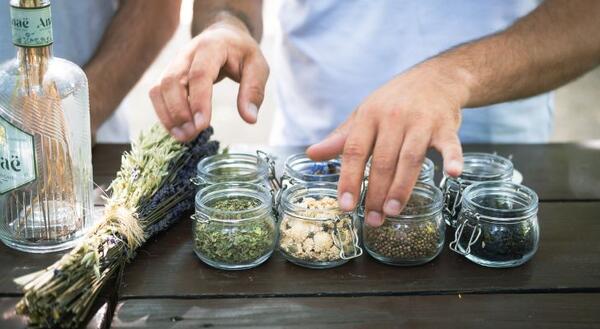
Saving Seeds preserves heritage
Saving seeds from the garden is much like passing down a family heirloom: a prized possession lives on from year to year or from generation to generation.
In the world of seeds, there are so many shapes and sizes, but they share one thing in common—they hold the potential for new life. While some seeds are large, and visible to the naked eye; the future of some botanical beings lives in a speck as small as dust. Treasure the seeds in your garden, both big and small; it is a cost-saving and educational botanical adventure.
Collecting seeds from the garden in fall is a great opportunity to reduce gardening expenses; challenge your green thumb; and preserve a favorite bloom for planting next year. If seed-saving is new to you, try collecting seed from annual plants: annuals produce lots of seed and seeds that are missed will reseed the garden next year. Being mindful of when and how to collect seeds will help ensure you collect viable seeds.
Plant Selection
When selecting seeds to save, choose plants that are healthy and disease-free. If seed-saving is new to you, try saving zinnias, marigolds, sunflowers, cosmos, nasturtium, bachelor’s buttons, and calendula. If harvesting hybrid flowers (crosses of two different varieties bred for color, size, or other favorable characteristics), the flowers grown from the collected seed will not be true to type (variation in color or size is common).
Timing
The timing of the harvest is key to success: collect too early and the seeds are not mature; collect too late and the seeds have fallen to the ground. Collect seeds when the flower head is completely dry (brown and shriveled). A browning stem and flower head base also indicate seeds are ready for harvest. For more advance seed saving, research the specific flower’s proper timing for harvest. For example, the flower pods of impatiens will burst open when the seed is mature! Harvesting these seeds requires careful timing.
Proper Harvesting
Harvest mature seedheads from the plant with sharp snips or pruners. To keep the plant tidy, while encouraging it to continue flowering, cut seedhead stems off just above the next set of leaves. Seed heads can be stored in a paper bag for a few weeks to continue drying.
Cleaning & Storing
Seeds are located at the center of the dried flower head and may be attached to the dry, brown petals. Gently separate the seeds from the chaff and dried plant materials. Each plant species will showcase a different size and shape of seed. Exploring the variations is an opportunity for scientific discovery! Place the harvested seeds in a labeled envelope or sealed glass jar to prevent moisture from gathering. Store them in a cool, dry place, away from direct light.
Most seeds do best if planted the next spring, however, some plants produce seed that stays viable for several years. After storing, learn if your seeds require special treatments to germinate: some seeds require a cold or wet period (stratification) and some require a break (or scar) in the seed coat (scarification).
If you have more seeds than you know what to do with, share with others at a seed swap, or donate to a seed library. A seed carries the joy of gardening, save them and share them!
ABOUT THE AUTHOR: Brittnay Haag is a Horticulture Educator with University of Illinois Extension, serving Livingston, McLean, and Woodford Counties. Her work focuses on youth horticulture education, specifically through school gardens and Jr. Master Gardener programs. Brittnay provides leadership for three county Master Gardener programs and is responsible for developing community programs and providing expertise in horticulture and environmental sciences.